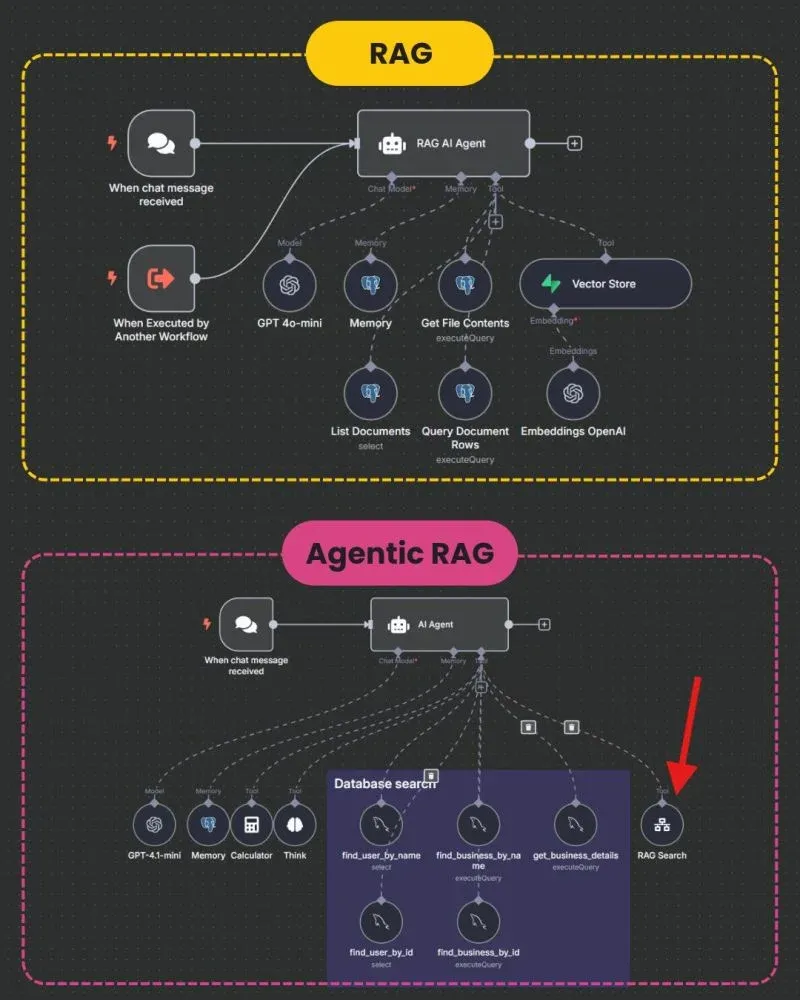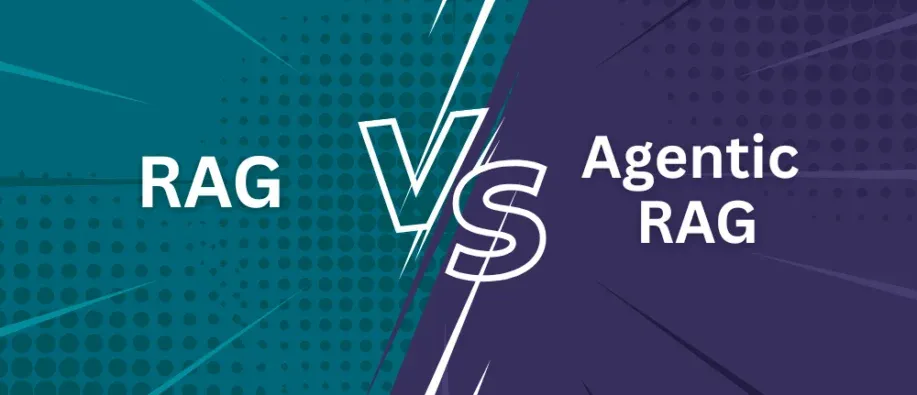AI systems are evolving rapidly, and with them, so are the architectures that power intelligent conversations and task execution.
Among the most prominent frameworks today is RAG (Retrieval-Augmented Generation). But now, a more advanced and dynamic approach is entering the field — Agentic RAG.
Let’s break down what each system does, and more importantly, why Agentic RAG is a leap forward.

[Image Credits: Machine Learning Community]
What is Traditional RAG?
Traditional RAG is a tried-and-true setup that enhances large language models (LLMs) like GPT-4o by providing them with external context. Here’s how it works:
-
A user query triggers a RAG AI agent.
-
This agent queries a vector store (where documents are embedded and indexed).
-
The relevant information is fetched from these documents.
-
The LLM then generates a response using both the query and retrieved knowledge.
This architecture is ideal for:
-
Static workflows
-
Document question answering
-
Memory recall
-
Knowledge retrieval from unstructured sources
As shown in the top half of the diagram, the process heavily relies on pre-embedded documents and simple query-document interactions.
Agentic RAG: Retrieval to Reasoning
Agentic RAG, on the other hand, represents a dynamic, reasoning-first approach. It still leverages retrieval, but the AI agent in this model isn’t just passively pulling in documents —
it thinks, calculates, calls APIs, and searches structured databases to complete tasks intelligently and autonomously.
In the bottom half of the diagram, you can see key differences:
-
The AI agent interacts with multiple tools: calculators, memory banks, and advanced search agents.
-
It goes beyond unstructured data by querying structured databases (e.g., find_user_by_name, get_business_details, etc.).
-
A special RAG Search module (highlighted with a red arrow) adds another layer of reasoning and targeted retrieval.
This enables Agentic RAG to:
-
Handle real-time data
-
Conduct complex reasoning steps
-
Integrate structured and unstructured sources
-
Execute multi-step workflows automatically
Why Agentic RAG Matters
As AI moves from static Q&A systems to autonomous agents, Agentic RAG becomes a foundational step forward. It bridges the gap between retrieval and execution, enabling more human-like decision making and workflow automation.
From enterprise data search to automated customer support, Agentic RAG unlocks use cases that were previously too complex for traditional retrieval models alone.







